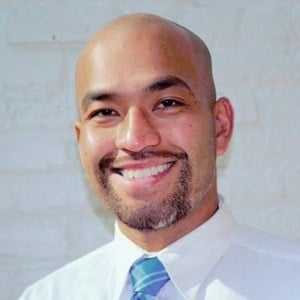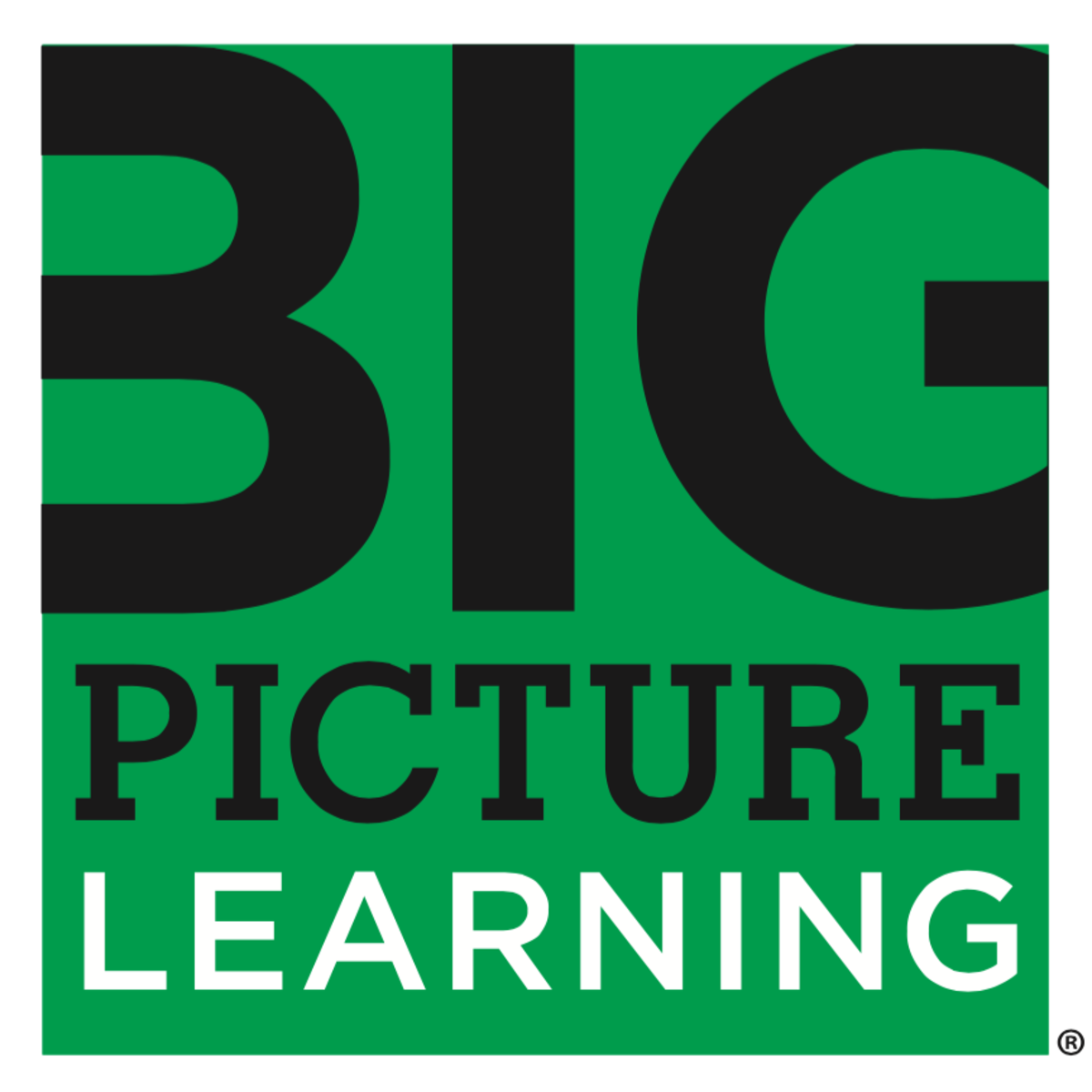Structuring Schools to Enable Deep, Student-Centered Learning in Real-World Settings
CompetencyWorks Blog

One of the main pillars of the Big Picture Learning design is deep, authentic student learning in the real world. For more than 20 years, BPL has experienced the power of this approach for increasing equity and deeper learning centered on the student’s talents and passions. In most schools, learning mostly takes place within the school building, and engaging with community partners is uncharted territory. So how can a school go about developing a real-world learning program? As a regional director for Big Picture Learning (and before that a BPL principal and advisor) supporting teachers and school leaders, this has been a major priority of my work. Here are some of the major lessons I’ve learned about what’s needed to make it happen.
Visionary Leadership: There needs to be a leader at the helm who holds deeply to the concept of deep, authentic student learning in the real world. A leader who leads through modeling and works tirelessly with their staff to consistently improve their practice. Why? Unfortunately, our current educational system was built and designed for in-school learning. The focus on standardized tests, daily schedule, course sequence, credits, seat time, and so on was designed to support a particular approach to education. So when a leader attempts to redefine the system by designing real-world learning structures such as an internship program, friction will arise. The gravitational pull on leaders to fit into and return to the old system will be immense, and this will be a true test of a leader’s core values and vision. In the face of this friction and in the eyes of their teachers, the leader will need to remain fully engaged in the problem-solving process to stay true to the vision. In my experience in leading and supporting systemic change, there are no silver bullets, but one thing is essential: a visionary leader who stays true to their core values.
Staffing: When I first became a principal, BPL co-founder Dennis Littky gave me a piece of advice that has served me well through the years. He said, “The single most important decision you will ever make as a leader is selecting the ‘right’ staff member.” Simple, right? As a young administrator, I took heed. But after 10 years as a school administrator, I have experienced first-hand the truth of this statement. I have made many bad decisions as a leader, but nothing has been more difficult than a bad staffing decision. Underperforming staff members can be coached to be better—but fundamentally I can coach skills, but I can’t coach will. In other words, staff mindsets about the work are equivalent to their competencies to learn and do the work. At Big Picture Learning, in order to find the “right” staff member, we developed a list of BPL Advisor Competencies that captures the skills and will needed to appropriately execute on our design.
Another pivotal role to support real-world learning is the Internship Coordinator—the bridge that connects the school with local internship opportunities. Equipped with an entrepreneurial spirit, this staff member will need to survey students about their interests, develop marketing materials for the program, establish internship procedures for students and staff, hit the pavement to reach out to local businesses and community leaders, host informational events to educate the community about the programs, regularly check on mentors and students, and help curate activities to better prepare students for the real world.
 For most schools with traditional staff structures, allocating a full-time position to support real-world learning may be difficult. In my last school, our social worker became a half-time social worker and half-time internship coordinator. Although this helped us start our program, we didn’t see the progress or success we were looking for. Finally, I decided to make her a full-time internship coordinator, and for the first time almost 100% of our students were placed in internships just one month into the school year. With her attention focused solely on internships, she was able to commit to building needed infrastructure at the end of the previous school year, expand our internship network over the summer, and solidify internships much sooner in the school year. This was the momentum we needed, and we would not have achieved it without the full-time position.
For most schools with traditional staff structures, allocating a full-time position to support real-world learning may be difficult. In my last school, our social worker became a half-time social worker and half-time internship coordinator. Although this helped us start our program, we didn’t see the progress or success we were looking for. Finally, I decided to make her a full-time internship coordinator, and for the first time almost 100% of our students were placed in internships just one month into the school year. With her attention focused solely on internships, she was able to commit to building needed infrastructure at the end of the previous school year, expand our internship network over the summer, and solidify internships much sooner in the school year. This was the momentum we needed, and we would not have achieved it without the full-time position.
“Coaching With”: Understanding that the BPL Advisor Competencies are untraditional, we acknowledge that even the most qualified advisor comes to work with unique learning needs. Hence, as leaders embark in transforming their school or creating an innovative learning space within their school, coaching staff is of the utmost importance. As a former principal and now regional director, I have seen that there is no stronger approach to coaching than what we call “coaching with.” What staff need is a leader who will be on the ground with them in the day-to-day providing guidance, feedback, and support in real time. In my leadership roles, I’ve found that I’ve been most effective and staff have been most appreciative when I have been able to work with them in this way.
For example, there is nothing more transformative than a student’s powerful relationship with a professional adult and the meaningful work they will be engaging in at their internship site. However, I have experienced that creating powerful learning at the internship site is among the most difficult skills to coach. Why? There are so many variables in play, such as the advisor’s effectiveness in connecting all of the learning activities, the internship mentor’s know-how to support student success, and the student’s skills, knowledge, and self-direction. So it’s important for leaders to attend some internship site visits with advisors to support the cornucopia of cognitive and non-cognitive skills that need to be addressed in order to define and support powerful learning experiences. During these site visits, leaders should model how to lead an internship setup or check-in meeting and reflect with advisors afterwards. They should discuss how to push for rigor in student projects. They should model how to help students further develop their project proposal by providing specific feedback. They can have weekly check-in meetings with advisors to review students’ internship projects and support continually deepening the learning. The point is that coaching—or I should say “learning with your advisors”—is the most powerful approach to supporting authentic, real-world learning.
Growth Framework/Accountability: One of the indicators of a strong team is when members truly own their piece of the work and vision. When it comes to real-world learning, it is no different. With traditional measures of success dominating the priorities for most schools, the pull and focus away from real-world learning will be consistent. Hence, teams need to be anchored in their vision and make a conscious and concerted effort to hold themselves and each other accountable. Similar to best practices for setting and achieving any goal, those systems need to be in place. But I’ve found that a team who upholds a growth mindset and has a strong culture of self- and team accountability, has been much more successful in developing a real-world learning program.
Resources: You’ve got to put your money where your mouth is. If leaders want to innovate and support real-world learning experiences for their students, they will need to creatively review their budget and make hard decisions.
- Staff-to-student ratio: If leaders want transformative learning experiences for their students, they will need to provide the conditions to make that happen. One key condition is the student-to-teacher ratio. In Big Picure Learning schools, we prefer a ratio of one advisor to 15 students. We’ve found that 15 is a threshold for advisors to know students extremely well and successfully manage and support the student learniing at their internships. Could this be done with a 1-to-18 or 1-to-20 ratio? Yes. It’s currently being done with schools in our network. However, as the ratio increases, we’ve seen the management and quality of learning experiences being negatively affected.
- Scheduling/Seat Time: Traditional structures can force the question of what happens to seat time requirements if students are at their internships. Our goal is to deepen the learning experience so that it completely outweighs the loss of seat time. What will the students be engaged in, what will they be learning, and how do we give value to that in our traditional structures?
- Transportation: In order to have a thriving real-world learning program, transportation is essential. At the Metropolitan Regional Career and Technical Center (the Met) in Providence, Rhode Island, our flagship school, we have a fleet of small school buses/vans and drivers allocated in our annual budget to transport over 1000 students to their internships every week. This may not be a viable option for most schools, and this is where some creativity is needed. Other strategies used in our network include working with district transportation offices during off-peak hours, purchasing tickets for local mass transit, and enlisting parents as drivers.
Those are some of the major lessons I’ve learned about supporting deep, authentic student learning in the real world. Some of the resources below provide additional detail. In my next post, I will discuss some specifics of implementing this work with a single student.
Learn More:
- Leaving to Learn: How Out-of-School Learning Increases Student Engagement and Reduces Dropout Rates
- Active Learning through Expeditions and Internships at Four Rivers
- The Big Picture: Education is Everyone’s Business
- One Kid at a Time: Big Lessons from a Small School
Sonn Sam, Ed.D. is Big Picture Learning’s Regional Director for the Southern USA. Sonn began his career with Big Picture Learning in 2003 as an advisor, then a principal, and most recently as Chief Innovation Officer at East Side High School New Jersey, where he led the Big Picture Academy. In this role, he focused on expanding the internship program and deepening the rigor of internship projects and exhibitions. Under his leadership, Big Picture Academy has become an innovation model within the Newark Public School School District. Sonn was also a Co-chair of New Jersey’s Future Ready Schools initiative and has served as a mentor in the New Jersey Leaders-to-Leaders program.